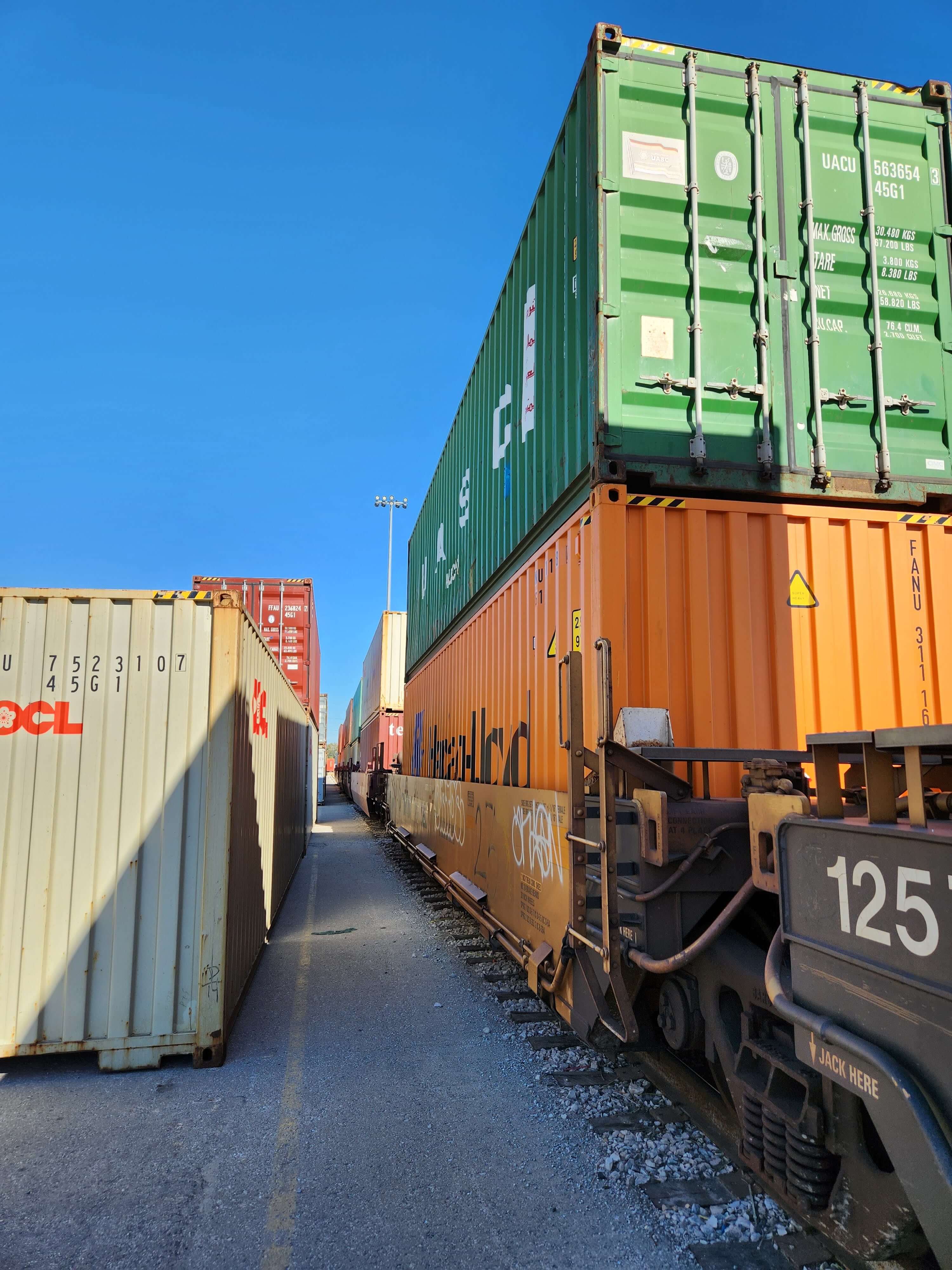
What Makes a Good Intermodal Lane
Many shippers are unaware that domestic intermodal could fit their routing needs and because of that, miss out on potential cost savings and added capacity. If you’re unsure whether your shipments may be traveling on a good intermodal lane, we’d be happy to discuss.

![]()
Optimize your logistics costs and resources
![]()
Turn your shipping and logistics into a competitive advantage
![]()
Focus on running your business
![]()
Enhance your customer experience
Companies often assume truckload is their only viable freight mode. Without a partner who knows good intermodal lanes, you may...
- Struggle finding freight capacity
- Face often elevated costs of truckload
- Miss out on more sustainable transportation modes
- Have difficulty tracking their shipments
At InTek Freight & Logistics, we frequently work with newer domestic shippers who didn’t realize intermodal may be an option for them because they didn’t know the characteristics of a good intermodal lane. Find out why intermodal may be a solution for you.



How to Determine a Good Intermodal Lane
Accounting for several factors in the shipping process including, but not limited to, location can help you determine whether your freight could be traveling on a good intermodal lane.
Length of Haul
The benchmark for where intermodal starts making sense is generally around 700 miles or more, but some intermodal lanes are competitive against truck at as little as 450 miles.
Dray Distance from Intermodal Ramps
The best intermodal moves have dray of 50 miles or less from the origin or destination ramps, although 100 miles or more can work. As the length of haul increases, so can the length of dray because of efficiencies gained on the line haul.
Weight
Domestic intermodal loads have a weight capacity of 42,500 lbs., but with proper planning opportunities, loads up to 44,000 lbs. are becoming a possibility for intermodal shippers.
Transit
The typical intermodal transit time is truckload, plus a day, when the lane is within one railroad's network. If the ramp-to-ramp move requires the load to be interlined between two railroads, then the travel time expectation is more like truck transit, plus two or three days.
-1.jpg?width=1000&height=444&name=Intermodal%20Ramp%20Wide%20(1)-1.jpg)
High Value
Intermodal has very few road miles, so the opportunity for theft is greatly reduced - something looked upon favorably by insurance carriers for high value loads.
Appointed Loads/Retail Deliveries
With intermodal lanes having rail ramps near the final destination, there are greater opportunities for success on appointed on-time deliveries as compared to truckload, making intermodal a great option for big box retailers.
Capacity
Intermodal can be used to either augment or entirely handle your truckload capacity. With intermodal, it is easier to find the dray capacity to drop and hook or live load / unload in a very short period of time because a single driver can turn several loads a day. By routing several dray drivers, capacity is exponentially improved over truckload.
Visibility
For some shippers, visibility is the holy grail of their supply chain. Intermodal visibility looks similar to small parcel tracking and tracing with a multitude of scans occurring throughout the rail transit. The information gives shippers more control and provides them more opportunities to use the information for a competitive advantage.

Ready to empower your business with innovative shipping solutions?
Request a Quote
Share information about your business to help us assemble your customized logistics solution. You’ll be introduced to one of our experts to start the conversation on how we can help.
Review Your Proposal
Let’s get your customized logistics solution on the road. After we get to know your shipping needs, we’ll offer options and work with you to determine the right one for your business.
Rely on InTek
Sleep soundly, knowing an experienced operations professional, backed by a team of industry experts, is focused on your long-term success and always available to address any issues. And we don’t stop there. We proactively reach out to troubleshoot and improve your shipping service, so you never have to wonder or worry.


Find out the most common misconceptions of intermodal transportation
Intermodal is commonly thought of as slow, unreliable, and complicated, but that’s not at all the case with today's door-to-door intermodal service. The railroads have made and continue to make substantial investments in infrastructure, technology and people to give intermodal truck-like characteristics, while being cost and transit competitive on lanes over 700 miles.
After you’ve learned about good intermodal lanes, join us as we bust some intermodal myths with our free Intermodal Misconceptions eBook.

Connect with Us
We’d love to learn more about your business’s unique needs and if we’re the right fit for you.






